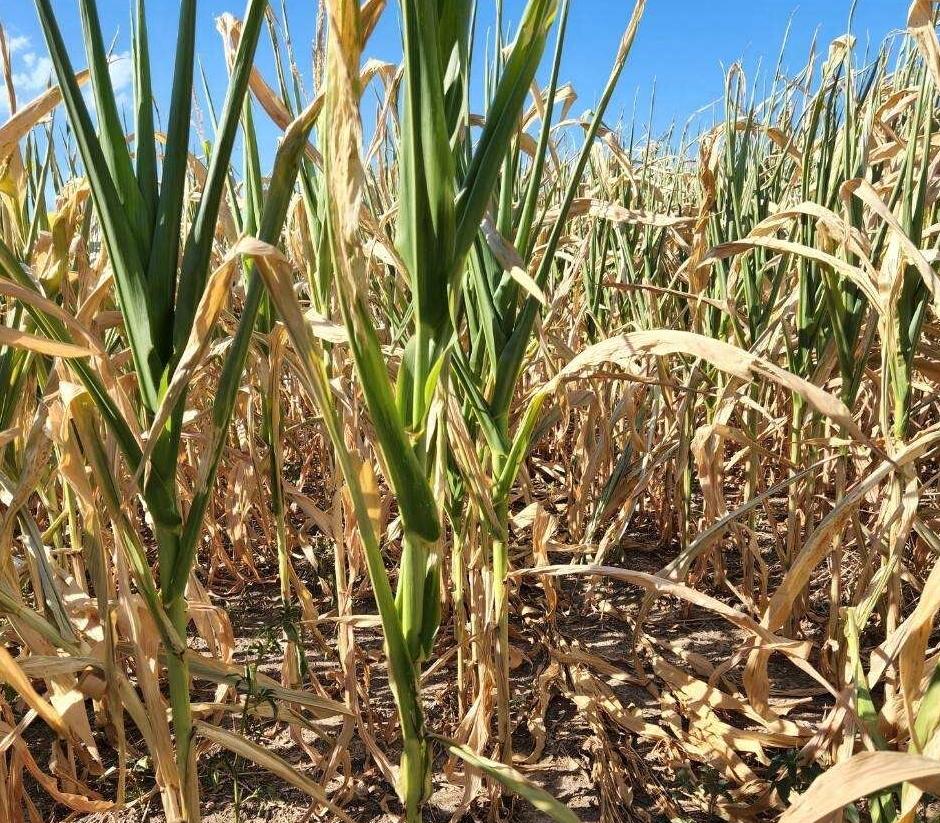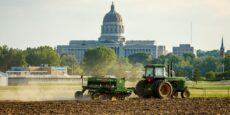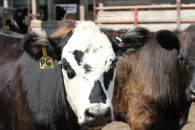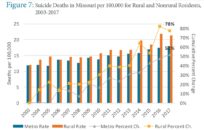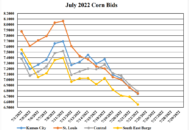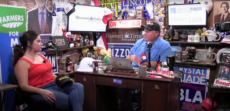Southern Missouri — It’s been a difficult year for farmers. An unseasonably wet spring followed by a serious drought during the summer has forced many farmers, and especially cattlemen, to make tough decisions about culling their herd.
Keith Baxter is a cattleman in Rogersville, Mo. he’s dealt with the effects of the drought first-hand.
“It’s kinda been a one-two punch for us down here,” Baxter said of rising fertilizer and gas prices coinciding with the wet spring and summer drought. “We couldn’t lay as much fertilizer as we wanted, and then we ran out of pastures for grazing.”
Baxter, like many cattlemen in Missouri, has been forced to feed his winter food reserves to his cattle during the summer, meaning he will likely be forced to scrape by come the cold months.
Baxter even resorted to letting his nearly 200 cattle forage for food, letting them wander to find anything green.
“We had to keep close tabs on the herds … we had issues with cattle getting out,” he said. “Obviously they’re going to go look for something green to eat instead of hay.”
Logan Brittingham is a row crop and cattle farmer in Poplar Bluff, Mo.. He farms with his grandpa on their family-owned farm, something he’s done since he was 13.
“It was a real wet spring, all the crops were late getting in … about a month late,” he said. “It’s just been a rough year for farmers, we’ve seen the two extremes … it’s affected every farm around my area.”
Brittingham hasn’t culled his heard yet, though he plans to, depending on how hay cutting goes.
Brittingham owns about 100 cattle and farms rice and soybeans as well, for him, the financial impact of the drought has been twofold. Brittingham was forced to sell cattle recently as a result of the drought.
“My irrigated land has been fine,” he said. “But my dryland — it’s gonna be an insurance farm this year.”
The financial impacts have been felt by both producers and consumers, as high gas prices, fertilizer and a lacking, oversaturated market have put many farmers in a tight spot.
“Even when we make profit, it’s just moving dollars around,” Baxter said of the high overhead costs associated with farming this year. “They’re (the consumers) spending a lot more money too, but it ain’t going to me — trust me.”
“The cost of everything, across the board, has come up,” Brittingham said.
Thankfully, some rain has mercifully made its way to the southern part of the state. Although Rogersville is still considered to be dealing with a severe drought and Poplar Bluff is dealing with a moderate drought, according to the federal drought tracker.
Even while still dealing with severe drought issues, Baxter thinks things are starting to look up in Rogersville.
“The pressure has backed off a bit,” he said.
Baxter attributes the improvement of conditions as much to the rain as he does to the support of his rural community.
“Our local co-op has supplied support,” Baxter said. “We’re lucky to be surrounded by other family farms, sharing hay and helping each other.”
Characteristic of a farmer, Baxter feels optimistic about how he and the farmers around him will handle the lasting impacts of the drought going forward.
“This ain’t the first drought we ever been through down here,” he said. “It don’t make it easier, but we know what to do … It’s a good time to find out that you have good neighbors.”
Featured Image Courtesy of The High Plains Journal (Reagan Bluel)

I’m a journalist hailing from the Detroit area. I love to tell investigative stories with a focus on everyday people.
You can contact me by email at matthew@missouritimes.com

